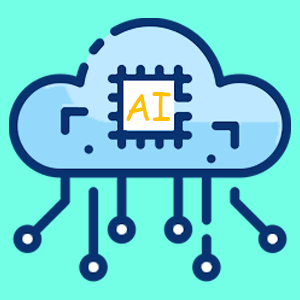 As enterprises face the growing demand for real-time decision-making and lightning-fast processing, Edge AI is stepping into the spotlight as a transformative technology. Combining the capabilities of edge computing and artificial intelligence, Edge AI is revolutionizing how businesses handle data, enabling faster processing and seamless analytics right where the data is generated. Here’s what IT teams need to know about this game-changing trend in 2024.
As enterprises face the growing demand for real-time decision-making and lightning-fast processing, Edge AI is stepping into the spotlight as a transformative technology. Combining the capabilities of edge computing and artificial intelligence, Edge AI is revolutionizing how businesses handle data, enabling faster processing and seamless analytics right where the data is generated. Here’s what IT teams need to know about this game-changing trend in 2024.
What is Edge AI?
Edge AI refers to the deployment of artificial intelligence algorithms and models at the edge of a network, rather than relying solely on centralized cloud systems. This approach processes data locally, on devices such as sensors, cameras, and IoT devices, significantly reducing the time it takes to analyze data and make decisions.
In essence, Edge AI eliminates the latency and bandwidth challenges associated with sending data to remote servers for processing, making it ideal for industries requiring instantaneous responses.
Key Benefits of Edge AI for Enterprises
1. Real-Time Processing
With Edge AI, enterprises can process data locally in milliseconds. This speed is crucial for applications like autonomous vehicles, predictive maintenance, and real-time fraud detection. The ability to analyze data on-site ensures operations remain smooth, efficient, and responsive.
2. Reduced Latency
In traditional cloud-based systems, the round trip to and from a data center can cause delays. Edge AI bypasses this by processing data closer to its source, providing near-instant insights. For industries like healthcare, where seconds can save lives, this capability is invaluable.
3. Enhanced Data Privacy
Processing data at the edge means sensitive information doesn’t have to be transmitted to the cloud, reducing the risk of data breaches and ensuring compliance with privacy regulations like GDPR and HIPAA.
4. Cost Efficiency
By reducing reliance on cloud storage and bandwidth, Edge AI helps organizations save on costs associated with transferring and storing large volumes of data.
Applications Driving Edge AI Adoption in 2024
1. Smart Manufacturing
Edge AI is transforming factories with predictive maintenance and real-time quality control. Sensors on production lines analyze performance and detect issues instantly, minimizing downtime and boosting efficiency.
2. Retail Analytics
Retailers use Edge AI for customer behavior analysis, inventory management, and checkout-free shopping experiences. Localized AI processing ensures faster and more personalized services.
3. Healthcare Innovation
Wearable devices and medical imaging equipment now leverage Edge AI to provide real-time health monitoring and diagnostics. This reduces response times in critical situations.
4. Autonomous Vehicles
Self-driving cars rely on Edge AI for split-second decision-making, such as obstacle detection, navigation, and collision avoidance—all without needing constant cloud connectivity.
5. Smart Cities
Edge AI powers urban infrastructure by analyzing data from sensors to optimize traffic flow, reduce energy usage, and enhance public safety.
Challenges IT Teams Must Address
While Edge AI offers immense potential, its adoption comes with a unique set of challenges:
1. Infrastructure Costs: Deploying Edge AI requires investment in edge devices, storage, and processing hardware.
2. Data Security: Although data is processed locally, edge devices can still be vulnerable to cyberattacks if not properly secured.
3. Scalability: Managing and maintaining numerous edge devices can be complex, especially in large-scale deployments.
4. Skill Gaps: IT teams must upskill to design, deploy, and manage Edge AI systems effectively.
Best Practices for IT Teams Implementing Edge AI
1. Leverage AI-Optimized Hardware: Choose devices equipped with AI-specific processors (like GPUs and TPUs) to maximize performance.
2. Adopt Edge-Friendly Platforms: Utilize platforms designed for edge deployments, such as NVIDIA Jetson or Google Coral, which simplify integration.
3.Prioritize Security: Implement robust security measures, including encryption, endpoint protection, and regular software updates, to safeguard edge devices.
4. Start Small and Scale Gradually: Test Edge AI solutions in smaller environments before scaling up to minimize risks and manage costs.
The Future of Edge AI in IT
As we move further into 2024, the convergence of edge computing and AI is set to reshape enterprise IT strategies. The shift from centralized systems to distributed intelligence aligns with the growing need for agility, privacy, and cost efficiency. Businesses that embrace Edge AI will not only improve operational efficiency but also gain a competitive edge in their industries.
For IT teams, the time to act is now. By understanding the fundamentals of Edge AI, addressing its challenges, and adopting best practices, enterprises can unlock the full potential of this powerful technology. In an era where speed and intelligence drive success, Edge AI is no longer optional—it’s essential.
